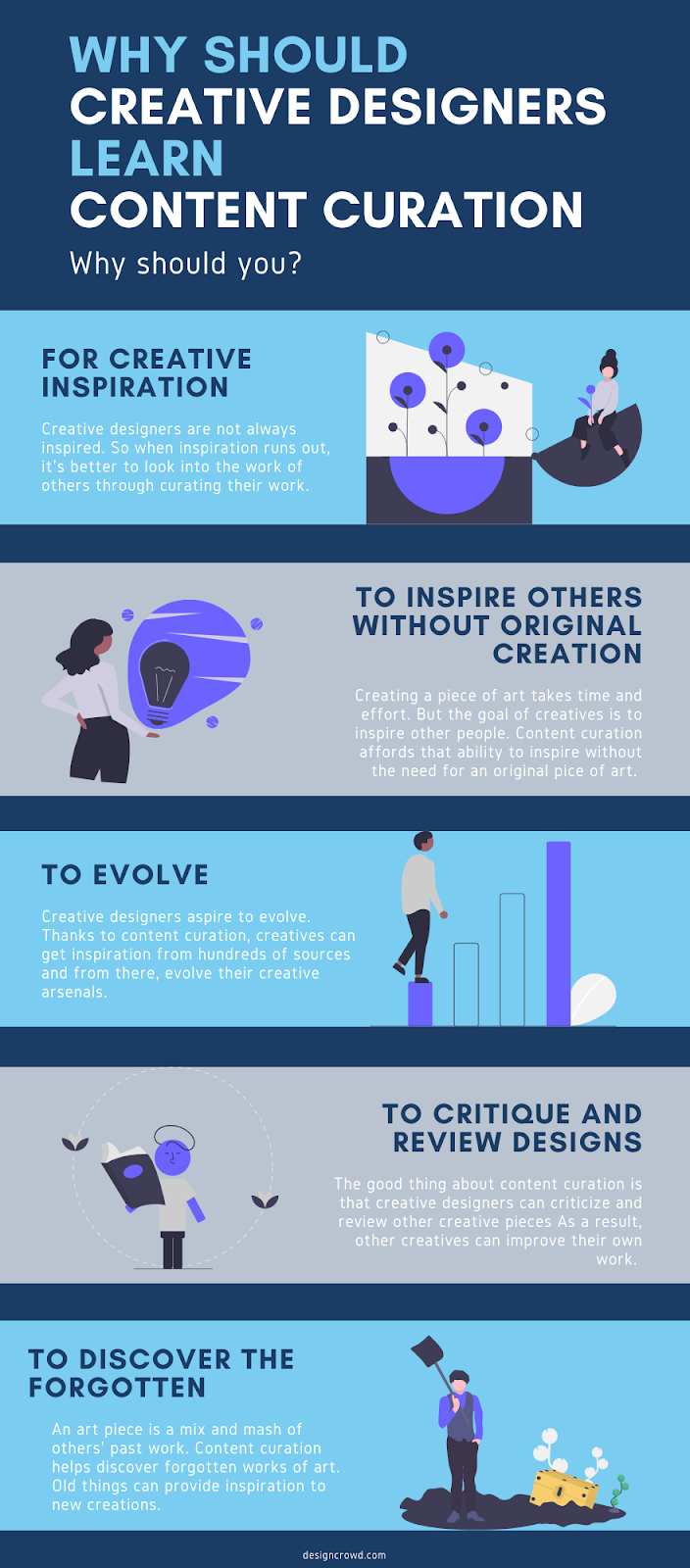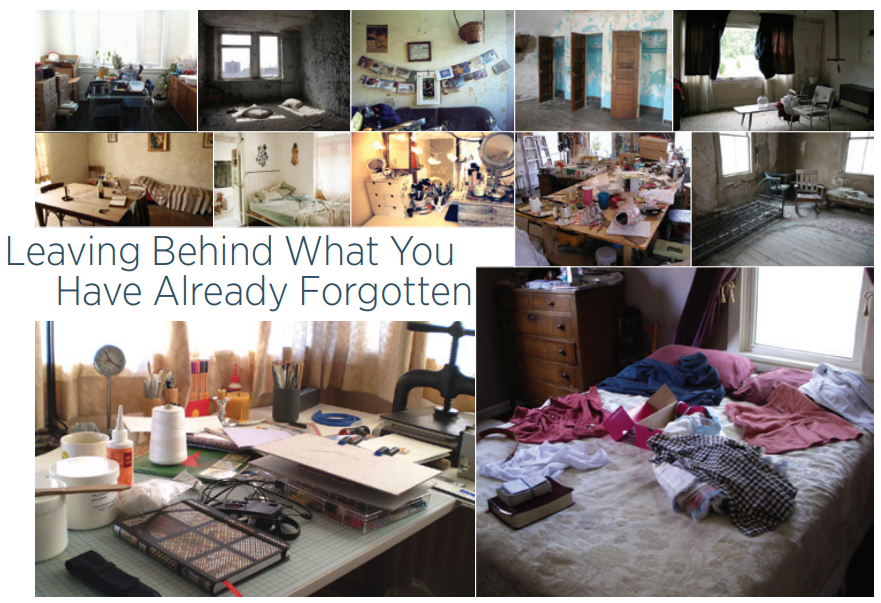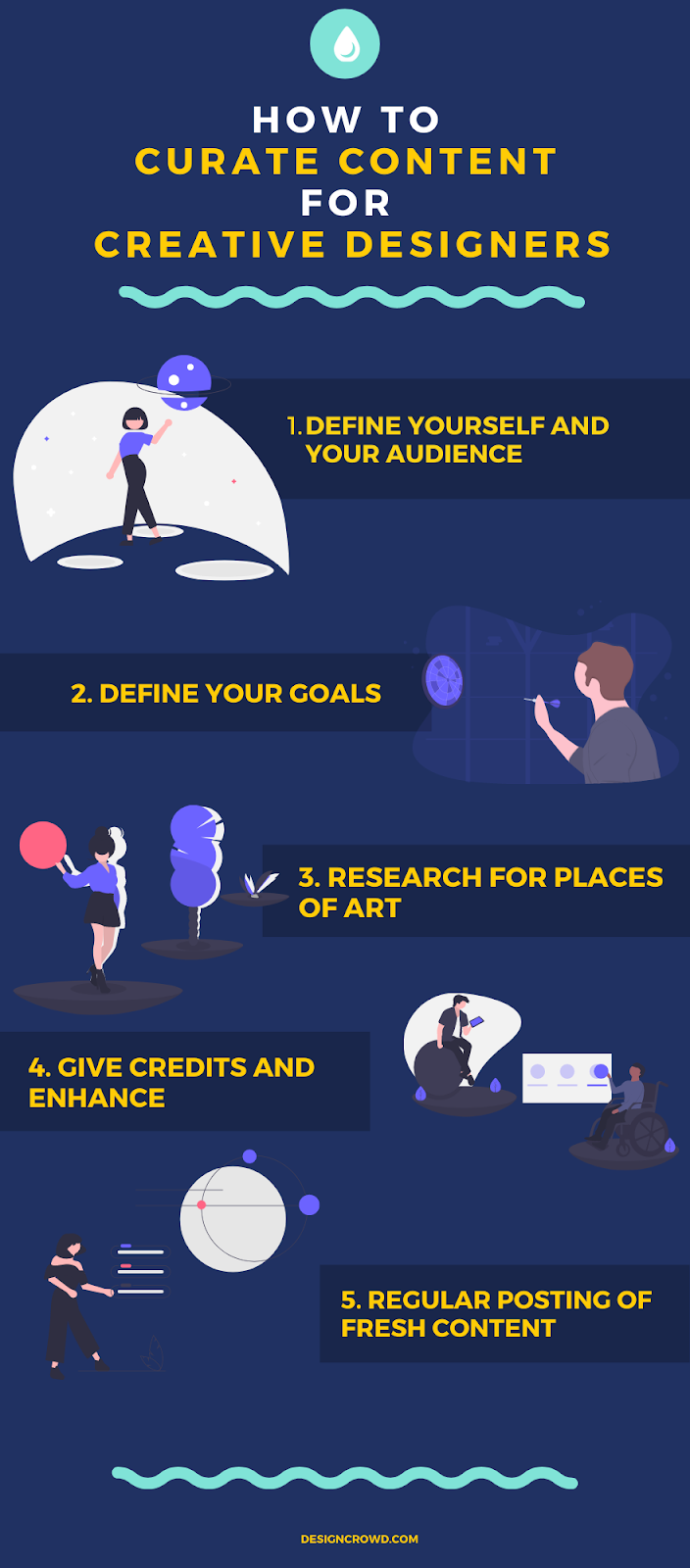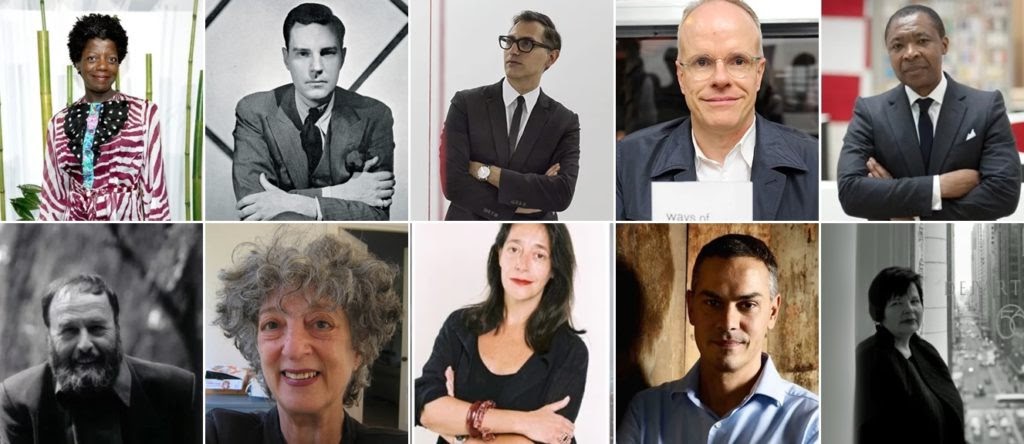
Although a single piece of art can speak for itself, sometimes it’s a lot better for the audience to see rows of art collections before they can say “Oh, this is what it all means.” To give better context and share more information, curators install certain pieces next to each other— hence, the magic of art curation.
But while curation resides in the laurels of professional curators we see in museums and design exhibitions, ordinary people nowadays have been doing it quite naturally. For example, social media allows users to tailor their experiences and those of their followers. They can choose to share only the pictures, videos, and stories they like their followers to see. In other words, they curate content.
Yet to certain groups of people, like creative designers, curation is part of the work. It’s an integral piece of the design process. Thoughtful curation helps designers choose the right solutions for their next context, according to Benef Lisefski, a UX and UI designer. “The most efficient designers find the perfect balance of creation and curation.”
The same goes for professional curators. “To be a curator today means operating in more than one field, often transgressing the division between curation and creation itself,” said Jan Boelen, artistic director of Z33 contemporary design space in Belgium. “Curation is actually becoming a design process, with a crucial need to shape and create the form of an exhibition relative to its content.”
To say that curators do not affect the work of creatives and vice versa is to admit ignorance over the creative process. A good piece of art is mostly a meld of other artists’ past works. Likewise, curators take cues from creative designers when they work on exhibits.
Truth is, whatever your creative expertise, you can benefit from good and intellectual content curation. The process is technically different from using Facebook or Instagram. It’s more of a news-writing process where you present your insights in relation to the material you aim to share. This extensive yet rewarding process is a breeding ground of creative masterpieces waiting behind the shadows of other great art pieces.
Why should creative designers curate content
So many things can inspire a creative designer: past experience, trauma, hometown, death, birth, and so on. Yet what better way to get inspired than to get soaked in the works of other co-artists. No life experience is the same, as they say
If you’re a designer who’s stuck in a creative rut, put down your chisel and canvas for a while, fold your laptops, stick in your digital pen, and dive into the masterpieces of other people.
With proper curation, you don’t just help yourself, you lift up other artists too. The beauty of artistic expression is in the collective experience. When more people begin to produce art to challenge the status quo, we instigate a societal change.
So buckle up and follow along as we highlight the reasons why creative designers should also be content curators.
-
For a wealth of inspiration
Creative designers don’t have a bottomless pit of inspiration resources. After a day or two of consistent and grueling exporting of ideas, the mind will run dry for some time. Content curation offers this seldom chance of squeezing artistic concepts from a wealth of creative influencers.
Content curation is an art and science in a way that there’s a right method to it. Since you don’t just slap and stick any painting you find audience-worthy, you’re given this opportunity to reflect and refigure your creative channels. In the process, you get hardwired to think smoothly, your reflections get deeper, the creative arsenals become wider, more inclusive, respectful, and consummate.
Caption: Pictures of old rooms and things as curated by Leslie for her dissertation.
In her thesis, Leslie Thane talks about how his curation of pictures of abandoned rooms helped her create a poem. According to her, without the curated images, she wouldn’t be inspired to create. Whether it’s a short story or a graphic design, creative designers can craft a work of art in lieu of other’s creations.
The goal of content curation for artists is to discover places of inspiration. Where one sees old statues of African jars, the other can poeticize slave trades. If one sees a photo of a garbage dumpster, the other can write songs of grand consumerism. “We observe what is going on around us in the larger context of people, culture, science, politics, economy, and so on,” says Boelen, “ we try to trace an underlying network of changes and evolutions, and then react to that in real-time.”
-
To inspire their followers without the need for the original creation
Creating a piece of art takes hefty amount of resources, time, and brainpower. “Curating external content will free up resources devoted to developing, drafting, editing, and approving original pieces.” says this New York Times article.
Content curation gives designers the opportunity to share and inspire their followers without the need to create a new stunning piece of art. How so? Since creatives look up to other creatives for inspiration, the benefits of curation are rooted in trust.
When followers are engrossed in your curated content, you become either a voice or a muse. If you’re an industry leader, curation works even better. Your curation can demystify your creative process, often giving a peak to what goes behind your mind.
Sooraj Divakaran compared the New York Times curation tactics to that of a trusting friend. “The idea behind curation at The Times is: What if your really smart, funny, charming friend gave you recommendations of what to read?”
Curators/creatives can inspire their co-designers in some way that no other publications can. There’s something special about following a trustworthy voice. First, curations help build that trust. Next, it fosters good relationships with followers. Lastly, it ultimately influences their creative work.
-
For design evolution
Creatives are born to think out of the box, to expand their horizon, to create something new and fresh. That’s why creative designers dread the day they get stuck in a monotonous rut with no kind of aesthetic evolution. Yet all the needed steps to create something new is a daunting experience. Good thing creatives can rehash old content or refigure works of art.
Thanks to effective content curation, the wealth of undiscovered works of literature surrounding your creative stint are seeds for design evolution. Whether that comes from others’ curated arts or your own, this is a possible chance to get you in the zone to wring more out-of-the-box juices.
According to Jan Boelen, in his work as a designer and a curator, he’s more interested in how contemporary culture forces theories to evolve. This means that both the process of curation and creation are means to push the boundaries of creativity and design.
Moreover, the curators’ goal to evolve in a certain creative landscape help reshape other creatives as well. Good curators steer followers and viewers of their created content towards thought-provoking modern ideas or never-before-made pieces of art.
-
To critique and review designs
The best of content curation lies in both the beautiful and the despicable. That’s why an effective curation involves showcasing not only those that are pleasing but also those that bother and provoke. By curating, the audience gets to see two sides of the coin that offer a glimpse of two different worlds.
“Curation is a far bigger process than picking out what you like,” said Dennis Elbers, founder of the Graphic Design Festival in Breda and curator for the Museum of the Image (MOTI). “Often you have to show stuff you don’t like in order to present the right perspective.”
Another reason to go for content curation is that it builds a community of like-minded art aficionados. Your constant posting about the Dutch participation in the 19th-century slave trade may garner like-minded people regarding slavery. Likewise, your constant critique of the Vietnam war through war-crime arts can spur anti-war narratives from other artists.
Content curation offers a way to highlight not only your skills but also your values. What matters to you as an artist; what may surprise or irk you will spill over your curated content.
-
To discover the forgotten
Often, great works of art are lurking in the forgotten annals of history — waiting to be excavated, waiting to be uncovered. Yet some arts are not really hidden. They are yet to be made.
Old and new arts work mutually. Old works of art provide inspiration to the new. Content curation instigates this creative juice. Some of the following IG accounts curate antiquated art pieces brought into a contemporary context: The IG accounts of Museum of Old and New Art (MONA), Blenheim Art Foundation, Art History Gallery, Nancy Spector a curator and art historian, and,
When you search for past works then share them with proper context in hope of shaping your own, you’re a creative benefiting from curating. For example, “you’re a curator when you search a library of fonts to find just the right typeface for a new brand,” said Benek Lisefski, a UX/UI designer. “Even a type designer rarely creates original work — most new typefaces involve rehashing inspirational forms from the past.”
“The best designers are master curators who know when to recycle inspiration and refresh old ideas into something purpose-built for modern design problems.” Lisefski further explains. “The most efficient designers find the perfect balance of creation and curation, according to their own strengths.”
How to curate content to maximize those benefits
As you know, content curation takes time and effort. It’s a skill to dig in sources and write a well-thought-out insight. But if you’re just starting out on this curation journey, fret not! We lay down the foundation of good content curation.
Follow along if you aspire to be better artists and creative designers through content curation. (Note that you can have your own process once rooted in the process, but this list is always the most vital and necessary.)
-
Define yourself and your audience
For effective content curation, it pays to know oneself as a creative designer. What’s the scope of your creative discipline? Are you a graphic designer or a painter? Do you specialize in type design or branding design or both? The kind of content that will appeal to you depends on your personality and design experience.
“Understanding your interests will help you know how you can best fulfill your purpose,” said Janina Aritao, a graphic designer based in Manila. To serve the purpose of content curation, it’s vital to assess everything about you — your bias and limitations.
Part of this step is knowing your audience. Although you follow your heart most of all, audience awareness can guide you to tailor content where both parties benefit. There’s a reason why “curate” became a buzzword. Brands wanted to cash in on the “personalized” content narrative. Do the same, at least this time you would be a real curator. (Not any businesses who use the word “curate” as a way to get more audience.)
Remember: content curation is different from content sharing. Curation is technically more demanding keeping in mind context and definitely — audience.
-
Define your goals
While the first step is knowing the present you, the next step involves what lies beyond you.
What’s your ultimate dream? What are your short-term and long-term goals? How content curation can stretch your possibilities? Is it your goal to expand your creative portfolio by engrossing yourself with the artworks of others? Or is it your goal to just demonstrate your work process through the process of other artists?
When you know your goals, you know what persona to project to your audience. It’ll help not only with connecting but also driving your audience towards your goal. If you want robust sustainability of furniture-making, your curated content on recycled sofa pieces can boost talks on sustainable designs among like-minded audiences.
Setting up goals firsthand won’t lead to a rigid curation experience. On the other hand, goals provide structure and destination. You’ll be open to more experience as you seek your goals further.
-
Research For Curator Influencers and Art Websites
“A good curator does the research, writes, and edits, and doesn’t just repost images,” said Sam Trotman, a popular Instagram curator. The success of content curation depends on the curator’s expansive sources. This means creatives who want to get a foothold on curation should scour the web for the best sources of art.
Pinterest is cute, yes. A daily scroll gives just the right information and inspiration. Yet to find gold pieces of art and content that have no enough audience and conversation, it’s vital to look at where arts take center stage.
Websites of world-famed museums such as MoMa, Metropolitan Museum of Art, and Louvre have updated and interactive content. High-authority websites like the New York Times Arts, The New Yorker, Washington Post, and Vogue often share great pieces of articles revolving around concepts and design. Also, scour ecommerce stores like Artsy, Etsy, and WikiArt for more artworks you’ve never seen.
Furthermore, Instagram’s heavy-image algorithm is a good resource for creative ideas. IG is home to some of the finest master curators like Myriam Ben Salah and JiaJia Fei are on the channel. Also on Instagram are interior designers like Athena Calderone and Kelly Werstler and installation artist Chiharo Shiota who post daily dose of inspirational images.
-
Give Credits To The Creator and Then Enhance
Again, curation is very different from downright sharing. In curation, you need to share valuable insights apart from what’s provided by the original author or creator.
The first step, however, and also the most vital is to give credits. There’s a reason why content curation gets a bad rap among the media-sharing community. Often the lack of complete, accurate, and responsible crediting makes some content creators steer clear from curation sites.
Yet content curation thrives in some areas. Thanks to comprehensive crediting where authors and creators shine better.
Content curation doesn’t leave it at just giving credits. Curators ought to share some thoughts on the matter. It can be a way to explain, expound, challenge, expand, and question. Whatever the aim of the shared content, the power of curation in creative designer resides in its ability to force them to think further — either for the benefit of creatives’ own content or of their audience,
-
Offer Relevant and Fresh Content Regularly
To drive a consistent source of inspiration, content curation has to be consistent. Regular posting of curated content doesn’t mean every day. Instead, make it a habit to take your curation skills every step of the way when browsing the web and visiting favorite websites.
This is all made possible with Scoop It’s most interactive content curation tools. Both the website and the app allow you to save and share content across different websites and gadgets.
Because your followers long for a daily dose of curated content, it’s vital to replenish them with content from industry experts. In a way, you also recalibrate your mind to certain perspectives that you might not have conceived otherwise.
Final Thoughts
Nowadays, it’s not enough for brands to be creative alone. Sure, it’s still important in today’s business landscape to create something new. But curation is now becoming a highly prized skill in business. So why not both. Brand-specific creatives should know when to create and when to curate.
Take a look at the curated pieces of Acne Studios. The brand’s aesthetic translates not just to a single product. Their whole collection, a myriad of multi-brand collaboration, is an exemplification too of their aesthetic. And you can see it in their stores anywhere.
This phenomenon is a growing body of curation, creation, and collaboration among brands. For instance, take a look at Sneakers Unboxed, a curated collection of Sneakers. See the pieces of Dover Street Market, Kapital, and Bombinate. Part of their marketing strategies today is to give customers the perception of a well-curated brand.
“ ‘Curation,’ a term traditionally associated with museology, is being increasingly used in the business environment in terms of creating differentiated experiences or collections of products both online and in-store,” said Gemma Street, her study about the role of curation in luxury retail.
This is actually good, according to Ana Andjelik, a style writer. “A good starting point for any brand to think like a curator is to create your own aesthetic world instead of simply relying on your product’s aesthetic or your visual handwriting,” A brand’s aesthetic world is infinite: it extends to their logo designs, their product pieces, a playlist, and even collaborations.
So, ready to curate? I hope this guide has been helpful. If you’ve been curating quite well, share in the comments your most effective strategies in content curation.







